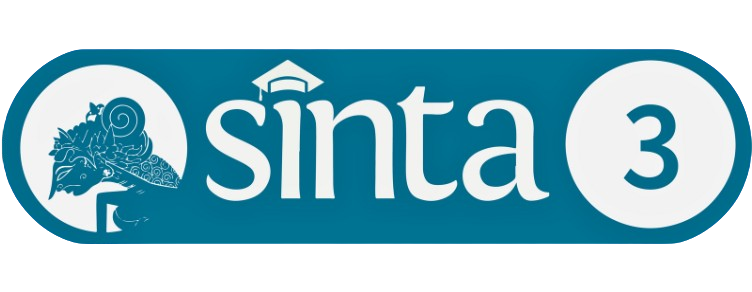Hubungan Perasaan Inferior dengan Jealousy dalam Berpacaran pada Dewasa Awal
Downloads
Penelitian ini bertujuan untuk mengetahui hubungan perasaan inferior dan jealousy dalam berpacaran pada dewasa awal. Penelitian melibatkan 218 partisipan yang memiliki rentang usia 18-25 tahun dengan menggunakan metode survei online. Alat ukur yang digunakan adalah The Feelings of Inadequacy Scale yang sudah diadaptasi dalam Bahasa Indonesia dengan koefisien reliabilitas Cronbach's alpha (α=0.924) dan Types of Jealousy Scale yang sudah ditranslasi dalam Bahasa Indonesia dengan koefisien reliabilitas Cronbach's alpha (α=0.831). Hasil analisis data menunjukkan bahwa terdapat korelasi positif antara perasaan inferior dengan jealousy sebesar 0.396 (Ï (218) =0,396; p<0,001).
Adler, A. (1982). The fundamental views of Individual Psychology. Individual Psychology: Journal of Adlerian Theory, Research & Practice, 38(1), 3–6.
Akdoğan, R., & Çimşir, E. (2019). Linking inferiority feelings to subjective happiness: Self-concealment and loneliness as serial mediators. Personality and Individual Differences, 149, 14–20. https://doi.org/10.1016/j.paid.2019.05.028
Alwisol. (2018). Psikologi Kepribadian (Revisi). Universitas Muhammadiyah Malang.
Barzeva, S. A., Richards, J. S., Meeus, W. H. J., & Oldehinkel, A. J. (2021). Social Withdrawal and Romantic Relationships: A Longitudinal Study in Early Adulthood. Journal of Youth and Adolescence, 50(9), 1766–1781. https://doi.org/10.1007/s10964-021-01469-1
Buunk, B. P. (1997). Personality, birth order and attachment styles as related to various types of jealousy. Personality and Individual Differences, 23(6), 997–1006. https://doi.org/10.1016/S0191-8869(97)00136-0
Demirtas-Madran, H. A. (2013). Undestanding coping with romantic jealousy: Major theoretical approaches. Re-constructing emotional spaces: From experience to regulation, 153.
DeSteno, D., Valdesolo, P., & Bartlett, M. Y. (2006). Jealousy and the threatened self: Getting to the heart of the green-eyed monster. Journal of Personality and Social Psychology, 91(4), 626–641. https://doi.org/10.1037/0022-3514.91.4.626
Gala, J., & Kapadia, S. (2013). Romantic Relationships in Emerging Adulthood: A Developmental Perspective. Psychological Studies, 58(4), 406–418. https://doi.org/10.1007/s12646-013-0219-5
Goldstein, S., & Naglieri, J. A. (Eds.). (2011). Encyclopedia of Child Behavior and Development. Springer US. https://doi.org/10.1007/978-0-387-79061-9
Hariawan, S. (2016). HUBUNGAN ANTARA KONTROL DIRI (SELF-CONTROL) DAN PERASAAN RENDAH DIRI (INFERIORITY FEELING) DENGAN KECENDERUNGAN AGRESI PADA REMAJA. [Skripsi, Universitas Airlangga].
Harris, M. A., & Orth, U. (2020). The link between self-esteem and social relationships: A meta-analysis of longitudinal studies. Journal of Personality and Social Psychology, 119(6), 1459–1477. https://doi.org/10.1037/pspp0000265
Karakurt, G. (2012). The Interplay Between Self Esteem, Feeling of Inadequacy, Dependency, and Romantic Jealousy as a Function of Attachment Processes Among Turkish College Students. Contemporary Family Therapy, 34(3), 334–345. https://doi.org/10.1007/s10591-012-9185-7
Kaufman-Parks, A. M., Longmore, M. A., Giordano, P. C., & Manning, W. D. (2019). Inducing jealousy and intimate partner violence among young adults. Journal of Social and Personal Relationships, 36(9), 2802–2823. https://doi.org/10.1177/0265407518802451
Miller, M. J., Denes, A., Diaz, B., & Buck, R. (2014). Attachment Style Predicts Jealous Reactions to Viewing Touch Between a Romantic Partner and Close Friend: Implications for Internet Social Communication. Journal of Nonverbal Behavior, 38(4), 451–476. https://doi.org/10.1007/s10919-014-0196-y
Orth, U., Maes, J., & Schmitt, M. (2015). Self-esteem development across the life span: A longitudinal study with a large sample from Germany. Developmental Psychology, 51(2), 248–259. https://doi.org/10.1037/a0038481
Pallant, J. (2010). SPSS survival manual: A step by step guide to data analysis using SPSS (4. ed). Open Univ. Press.
Putri, A. F. (2018). Pentingnya Orang Dewasa Awal Menyelesaikan Tugas Perkembangannya. SCHOULID: Indonesian Journal of School Counseling, 3(2), 35. https://doi.org/10.23916/08430011
Sánchez-Hernández, M. D., Herrera-Enríquez, M. C., & Expósito, F. (2020). Controlling Behaviors in Couple Relationships in the Digital Age: Acceptability of Gender Violence, Sexism, and Myths about Romantic Love. Psychosocial Intervention, 29(2), 67–81. https://doi.org/10.5093/pi2020a1
Santrock, J. W. (2011). Life-span development (13th ed). McGraw-Hill Higher Education.
Schultz, D. P., & Schultz, S. E. (2017). Theories of Personality. Theories of Personality, 516.
Stieger, S., Preyss, A. V., & Voracek, M. (2012). Romantic jealousy and implicit and explicit self-esteem. Personality and Individual Differences, 52(1), 51–55. https://doi.org/10.1016/j.paid.2011.08.028
Y. Go, J. P., Chan, J. A., Cruz, M. J. T. D., Gomez, T. M., & Arcinas, M. M. (2021). A Correlation Study between Self-esteem and Romantic Jealousy among University Students. International Journal of Multidisciplinary: Applied Business and Education Research, 2(5), 381–387. https://doi.org/10.11594/ijmaber.02.05.02
Yu, S., Zhang, C., Zhou, Y., Shi, Y., & Xu, W. (2020). Longitudinal relationship between inferiority and maladjustment among college students: The mediation of dispositional mindfulness and moderation of left-behind experience. Children and Youth Services Review, 116, 105249. https://doi.org/10.1016/j.childyouth.2020.105249
Zhang, C., Xu, W., & Lu, H. (2020). Longitudinal relationship between inferiority and aggression in Chinese college students: The moderation of left-behind experience. Personality and Individual Differences, 156, 109791. https://doi.org/10.1016/j.paid.2019.109791
BRPKM is a periodical publication with open access to the Creative Commons Attribution 4.0 International (CC-BY 4.0). Therfore, the copyright remains with the author.
With this license, anyone has the right to use the information and to re-distribute the content contained in this journal for any purpose, including commercial purposes. It can be done as long as it fulfills two conditions, namely; (1) you shall provide attribution by citing the original link source, and state if any changes have been made; and (2) you may not use any legal provisions or technological means of control that can legally restrict others from doing the things that are permitted by this license.
Journal editors will not ask the author to approve the transfer of copyright on all published manuscripts.










